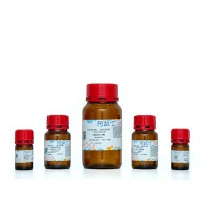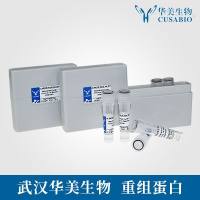Mining the Salivary Proteome with Grating‐Coupled Surface Plasmon Resonance Imaging and Surface Plasmon Coupled Emission Microarrays
互联网
- Abstract
- Table of Contents
- Materials
- Figures
- Literature Cited
Abstract
Biological indicators have numerous and widespread utility in personalized medicine, but the measurement of these indicators also poses many technological and practical challenges. Blood/plasma has typically been used as the sample source with which to measure these indicators, but the invasiveness associated with sample procurement has led to increased interest in saliva as an attractive alternative. However, there are unique issues associated with the measurement of saliva biomarkers. These issues are compounded by the imperfect correlation between saliva and plasma with respect to biomarker profiles. In this manuscript, we address the technical challenges associated with saliva biomarker quantification. We describe a high?content microarray assay that employs both grating?coupled surface plasmon resonance imaging and surface plasmon?coupled emission modalities in a highly sensitive assay with a large dynamic range. This powerful approach provides the tools to map the proteome of saliva, which in turn should greatly enhance the utility of salivary biomarker profiles in personalized medicine. Curr. Protoc. Toxicol. 53:18.16.1?18.16.19. © 2012 by John Wiley & Sons, Inc.
Keywords: saliva; biomarker; proteomics; surface plasmon resonance; SPR; emission microarray; GCSPR; GCSPCE; personalized medicine; biofluid; biomolecule
Table of Contents
- Introduction
- Strategic Planning
- Basic Protocol 1: Saliva Collection and Storage
- Basic Protocol 2: GCSPR/GCSPCE Microarray Sensor Chip Preparation
- Basic Protocol 3: Saliva Indirect Immunoassay Microarray Using GCSPCE
- Alternate Protocol 1: Manual Chip Printing
- Alternate Protocol 2: Direct Fluorescent Immunoassay Microarray Using GCSPCE
- Alternate Protocol 3: Detection of Viral Particles from Saliva on a Microarray Using GCSPR Imaging
- Reagents and Solutions
- Commentary
- Literature Cited
- Figures
- Tables
Materials
Basic Protocol 1: Saliva Collection and Storage
Materials
Basic Protocol 2: GCSPR/GCSPCE Microarray Sensor Chip Preparation
Materials
Basic Protocol 3: Saliva Indirect Immunoassay Microarray Using GCSPCE
Materials
Alternate Protocol 1: Manual Chip Printing
Alternate Protocol 2: Direct Fluorescent Immunoassay Microarray Using GCSPCE
Alternate Protocol 3: Detection of Viral Particles from Saliva on a Microarray Using GCSPR Imaging
|
Figures
-
Figure 18.16.1 Indirect fluorescent immunoassay using grating‐coupled surface plasmon‐coupled emission (GCSPCE). In this GCSPCE assay diagram, capture antibodies have been printed on a gold sensor chip with a holographic diffraction grating. Analyte capture was detected by recirculating an analyte‐specific biotinylated secondary antibody and streptavidin‐Alexa Fluor 647 over the chip. Fluorophores on the chip were then excited using an LED light source, and a CCD camera was used to detect the resulting fluorescence. In addition to the standard fluorescent excitation shown above, the interaction of the surface plasmon increases the directional fluorescent emission which amplifies this fluorescent signal ∼80‐fold. View Image -
Figure 18.16.2 GCSPCE microarray image using a saliva sample. The GCSPCE microarray image was taken after exposure to human saliva doped with 14 recombinant human protein biomarkers of interest and a cocktail of fluorescently labeled secondary antibodies. Six cytokines were not included in the saliva sample to provide negative controls. Regions of interest (ROIs) are printed in groups of three for each biomarker. Isotype controls, diluent control (PBS), and positive control ROIs are included in the image. View Image -
Figure 18.16.3 Saliva does not affect the IL‐2 limit of detection by GCSPCE. Recombinant human IL‐2 was diluted in protease inhibitor‐treated saliva and PBS (1:1) (•) or PBS alone (▴) and detected using an indirect sandwich assay. Points indicate the mean fluorescence detected from 3 ROI microspots. Error bars indicate standard deviation. View Image
Videos
Literature Cited
| Literature Cited | |
| Barnes, A.J., Kim, I., Schepers, R., Moolchan, E.T., Wilson, L., Cooper, G., Reid, C., Hand, C., and Huestis, M.A. 2003. Sensitivity, specificity, and efficiency in detecting opiates in oral fluid with the Cozart Opiate Microplate EIA and GC‐MS following controlled codeine administration. J. Anal. Toxicol. 27:402‐407. | |
| Borelli, V., Marchioli, A., Di Taranto, R., Romano, M., Chiandussi, S., Di Lenarda, R., Biasotto, M., and Zabucchi, G. 2010. Neuropeptides in saliva of subjects with burning mouth syndrome: A pilot study. Oral Dis. 16:365‐374. | |
| Bosker, W.M. and Huestis, M.A. 2009. Oral fluid testing for drugs of abuse. Clin. Chem. 55:1910‐1931. | |
| Brown, J.K., Pemberton, A.D., Wright, S.H., and Miller, H.R. 2004. Primary antibody‐Fab fragment complexes: A flexible alternative to traditional direct and indirect immunolabeling techniques. J. Histochem. Cytochem. 52:1219‐1230. | |
| Carter, C.S., Pournajafi‐Nazarloo, H., Kramer, K.M., Ziegler, T.E., White‐Traut, R., Bello, D., and Schwertz, D. 2007. Oxytocin: Behavioral associations and potential as a salivary biomarker. Ann. N.Y. Acad. Sci. 1098:312‐322. | |
| Cone, E.J., Presley, L., Lehrer, M., Seiter, W., Smith, M., Kardos, K.W., Fritch, D., Salamone, S., and Niedbala, R.S. 2002. Oral fluid testing for drugs of abuse: Positive prevalence rates by Intercept immunoassay screening and GC‐MS‐MS confirmation and suggested cutoff concentrations. J. Anal. Toxicol. 26:541‐546. | |
| Cooper, G., Wilson, L., Reid, C., Hand, C., and Spiehler, V. 2006. Validation of the cozart amphetamine microplate EIA for the analysis of amphetamines in oral fluid. Forensic Sci. Int. 159:104‐112. | |
| Dos‐Santos, M.C., Matos‐Gomes, N., Makimoto, F.H., Katsurayama, M., Santana, L.L., Becker, M.A., Paredes‐Garcia, E., and Bertho, A.L. 2009. Cell phenotyping in saliva of individuals under psychological stress. Cell Immunol. 260:39‐43. | |
| Giampaolo, B., Angelica, M., and Antonio, S. 2002. Chromogranin ‘A’ in normal subjects, essential hypertensives and adrenalectomized patients. Clin. Endocrinol. 57:41‐50. | |
| Goldman, E.R., Balighian, E.D., Mattoussi, H., Kuno, M.K., Mauro, J.M., Tran, P.T., and Anderson, G.P. 2002. Avidin: A natural bridge for quantum dot‐antibody conjugates. J. Am. Chem. Soc. 124:6378‐6382. | |
| Granger, D.A., Schwartz, E.B., Booth, A., Curran, M., and Zakaria, D. 1999. Assessing dehydroepiandrosterone in saliva: A simple radioimmunoassay for use in studies of children, adolescents and adults. Psychoneuroendocrinology 24:567‐579. | |
| Harden, C.J., Perez‐Carrion, K., Babakordi, Z., Plummer, S.F., Hepburn, N., Barker, M.E., Wright, P.C., Evans, C.A., and Corfe, B.M. 2012. Evaluation of the salivary proteome as a surrogate tissue for systems biology approaches to understanding appetite. J. Proteomics 75:2916‐2923. | |
| He, L., Li, P., Sha, Y.Q., Chen, Z.B., Luan, Q.X., and Wang, X.Y. 2010. Levels of tumor necrosis factor‐alpha and interleukin‐1beta in saliva of metabolic syndrome patients. Zhonghua Kou Qiang Yi Xue Za Zhi 45:269‐273. | |
| Jang, M.U., Park, J.W., Kho, H.S., Chung, S.C., and Chung, J.W. 2011. Plasma and saliva levels of nerve growth factor and neuropeptides in chronic migraine patients. Oral Dis. 17:187‐193. | |
| Jin, G.B., Unfricht, D.W., Fernandez, S.M., and Lynes, M.A. 2006. Cytometry on a chip: Cellular phenotypic and functional analysis using grating‐coupled surface plasmon resonance. Biosens. Bioelectron. 22:200‐206. | |
| Kawas, S.A., Rahim, Z.H., and Ferguson, D.B. 2012. Potential uses of human salivary protein and peptide analysis in the diagnosis of disease. Arch. Oral Biol. 57:1‐9. | |
| Koh, S.‐Q. and Koh, C.‐H. 2007. The use of salivary biomarkers in occupational and environmental medicine. Occup. Environ. Med. 64:202‐210. | |
| Lee, Y.H. and Wong, D.T. 2009. Saliva: An emerging biofluid for early detection of diseases. Am. J. Dent. 22:241‐248. | |
| Leigh, J.E., Steele, C., Wormley, F., and Fidel, P.L. Jr. 2002. Salivary cytokine profiles in the immunocompetent individual with Candida‐associated denture stomatitis. Oral Microbiol. Immunol. 17:311‐314. | |
| Li, Y.W., Nath, N., and Reichert, W.M. 2003. Parallel comparison of sandwich and direct label assay protocols on cytokine detection protein arrays. Anal. Chem. 75:5274‐5281. | |
| Liedberg, B., Nylander, C., and Lundstrom, I. 1983. Surface‐plasmon resonance for gas‐detection and biosensing. Sens. Actuators 4:299‐304. | |
| Liedberg, B., Lundstrom, I., and Stenberg, E. 1993. Principles of biosensing with an extended coupling matrix and surface‐plasmon resonance. Sens. Actuators B Chem. 11:63‐72. | |
| Liu, W., Dan, H., Wang, Z., Jiang, L., Zhou, Y., Zhao, M., Chen, Q., and Zeng, X. 2009. IFN‐gamma and IL‐4 in saliva of patients with oral lichen planus: A study in an ethnic Chinese population. Inflammation 32:176‐181. | |
| Loo, J.A., Yan, W., Ramachandran, P., and Wong, D.T. 2010. Comparative human salivary and plasma proteomes. J. Dent. Res. 89:1016‐1023. | |
| Marrone, G.F., Paulpillai, M., Evans, R.J., Singleton, E.G., and Heishman, S.J. 2010. Breath carbon monoxide and semiquantitative saliva cotinine as biomarkers for smoking. Hum. Psychopharmacol. 25:80‐83. | |
| Marusov, G., Sweatt, A., Pietrosimone, K., Benson, D., Geary, S.J., Silbart, L.K., Challa, S., Lagoy, J., Lawrence, D.A., and Lynes, M.A. 2012. A microarray biosensor for multiplexed detection of microbes using grating‐coupled surface plasmon resonance imaging. Environ. Sci. Technol. 46:348‐359. | |
| McVicar, A.J., Greenwood, C.R., Fewell, F., D'Arcy, V., Chandrasekharan, S., and Alldridge, L.C. 2007. Evaluation of anxiety, salivary cortisol and melatonin secretion following reflexology treatment: A pilot study in healthy individuals. Complement Ther. Clin. Pract. 13:137‐145. | |
| Moulin, A.M., O'Shea, S.J., Badley, R.A., Doyle, P., and Welland, M.E. 1999. Measuring surface‐induced conformational changes in proteins. Langmuir 15:8776‐8779. | |
| Nakane, H., Asami, O., Yamada, Y., and Ohira, H. 2002. Effect of negative air ions on computer operation, anxiety and salivary chromogranin A‐like immunoreactivity. Int. J. Psychophysiol. 46:85‐89. | |
| Ng, V., Koh, D., Mok, B., Lim, L.P., Yang, Y., and Chia, S.E. 2004. Stressful life events of dental students and salivary immunoglobulin A. Int. J. Immunopathol. Pharmacol. 17:49‐56. | |
| Ng, V., Koh, D., Mok, B.Y., Chia, S.E., and Lim, L.P. 2003. Salivary biomarkers associated with academic assessment stress among dental undergraduates. J. Dent. Educ. 67:1091‐1094. | |
| Noto, Y., Sato, T., Kudo, M., Kurata, K., and Hirota, K. 2005. The relationship between salivary biomarkers and state‐trait anxiety inventory score under mental arithmetic stress: A pilot study. Anesth. Analg. 101:1873‐1876. | |
| Parahitiyawa, N.B., Scully, C., Leung, W.K., Yam, W.C., Jin, L.J., and Samaranayake, L.P. 2010. Exploring the oral bacterial flora: Current status and future directions. Oral Dis. 16:136‐145. | |
| Rai, B., Kaur, J., Anand, S.C., and Jacobs, R. 2011. Salivary stress markers, stress and periodontitis: A pilot study. J. Periodontol. 82:287‐292. | |
| Randeva, H.S., Karteris, E., Lewandowski, K.C., Sailesh, S., O'Hare, P., and Hillhouse, E.W. 2003. Circadian rhythmicity of salivary leptin in healthy subjects. Mol. Genet. Metab. 78:229‐235. | |
| Rehak, N.N., Cecco, S.A., and Csako, G. 2000. Biochemical composition and electrolyte balance of “unstimulated” whole human saliva. Clin. Chem. Lab. Med. 38:335‐343. | |
| Reilly, S.M.T., Nessing, P.A., Guignon, E.F., Lynes, M.A., and Fernandez, S.M. 2006. SPR surface enhanced fluorescence with a gold‐coated corrugated sensor chip. In Plasmonics in Biology and Medicine III, Proceedings of SPIE, San Jose, CA, USA, January 23‐24. Society of Photo‐optical Instrumentation Engineers, Bellingham, WA. | |
| Rice, J.M., Stern, L.J., Guignon, E.F., Lawrence, D.A., and Lynes, M.A. 2012. Antigen‐specific T cell phenotyping microarrays using grating coupled surface plasmon resonance imaging and surface plasmon coupled emission. Biosens Bioelectron. 15:264‐269. | |
| Sanchez‐Carbayo, M. 2006. Antibody arrays: Technical considerations and clinical applications in cancer. Clin. Chem. 52:1651‐1659. | |
| Saruta, J., Sato, S., and Tsukinoki, K. 2010. The role of neurotrophins related to stress in saliva and salivary glands. Histol. Histopathol. 25:1317‐1330. | |
| Schwope, D.M., Milman, G., and Huestis, M.A. 2010. Validation of an enzyme immunoassay for detection and semiquantification of cannabinoids in oral fluid. Clin. Chem. 56:1007‐1014. | |
| Sehgal, D. and Vijay, I.K. 1994. A method for the high‐efficiency of water‐soluble carbodiimide‐mediated amidation. Anal. Biochem. 218:87‐91. | |
| Shinohara, H. and Kodama, H. 2011. Relationship between circadian salivary melatonin levels and sleep‐wake behavior in infants. Pediatr. Int. 53:29‐35. | |
| Shirotsuki, K., Izawa, S., Sugaya, N., Yamada, K.C., Ogawa, N., Ouchi, Y., Nagano, Y., and Nomura, S. 2009. Salivary cortisol and DHEA reactivity to psychosocial stress in socially anxious males. Int. J. Psychophysiol. 72:198‐203. | |
| Simcic, D., Pezelj‐Ribaric, S., Grzic, R., Horvat, J., Brumini, G., and Muhvic‐Urek, M. 2006. Detection of salivary interleukin 2 and interleukin 6 in patients with burning mouth syndrome. Mediators Inflamm. 2006:54632. | |
| Sluiter, J.K., van der Beek, A.J., and Frings‐Dresen, M.H. 2003. Medical staff in emergency situations: Severity of patient status predicts stress hormone reactivity and recovery. Occup. Environ. Med. 60:373‐374. | |
| Takai, N., Yamaguchi, M., Aragaki, T., Eto, K., Uchihashi, K., and Nishikawa, Y. 2007. Gender‐specific differences in salivary biomarker responses to acute psychological stress. Ann. N.Y. Acad. Sci. 1098:510‐515. | |
| Teles, R.P., Likhari, V., Socransky, S.S., and Haffajee, A.D. 2009. Salivary cytokine levels in subjects with chronic periodontitis and in periodontally healthy individuals: A cross‐sectional study. J. Periodontal Res. 44:411‐417. | |
| Thomadaki, K., Helmerhorst, E.J., Tian, N., Sun, X., Siqueira, W.L., Walt, D.R., and Oppenheim, F.G. 2011. Whole‐saliva proteolysis and its impact on salivary diagnostics. J. Dent. Res. 90:1325‐1330. | |
| Yang, Y., Koh, D., Ng, V., Lee, C.Y., Chan, G., Dong, F., Goh, S.H., Anantharaman, V., and Chia, S.E. 2002. Self perceived work related stress and the relation with salivary IgA and lysozyme among emergency department nurses. Occup. Environ. Med. 59:836‐841. | |
| Zelles, T., Purushotham, K.R., Macauley, S.P., Oxford, G.E., and Humphreys‐Beher, M.G. 1995. Saliva and growth factors: The fountain of youth resides in us all. J. Dent. Res. 74:1826‐1832. |









